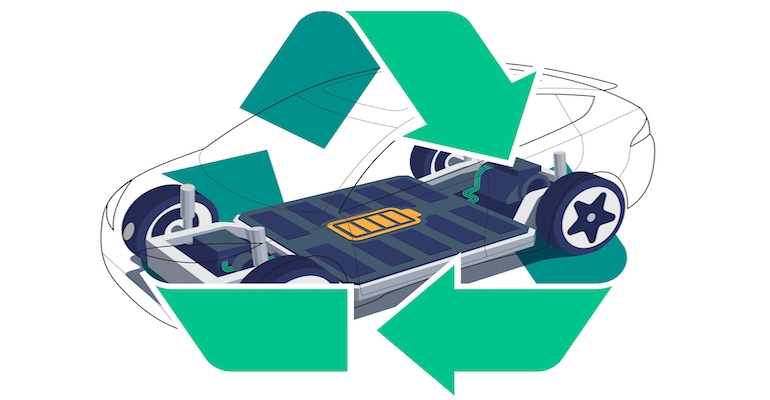As electric vehicles (EVs) become increasingly prevalent on roads worldwide, the role of EV battery recycling is emerging as a critical component of sustainable automotive practices. EV battery recycling is essential for managing the lifecycle of lithium-ion batteries, which are the heart of most electric vehicles. These batteries contain a mix of valuable materials, including lithium, cobalt, nickel, and other metals, which are crucial not only for the performance and longevity of EVs but also for the environmental footprint of their production and disposal.

The growing number of electric vehicles on the market underscores the importance of developing and maintaining effective EV battery recycling systems to handle the end-of-life phase of these batteries. When batteries reach the end of their useful life, proper recycling ensures that hazardous materials are safely managed, preventing potential contamination of soil and water. At the same time, it allows for the recovery and reuse of valuable materials, which reduces the need for raw material extraction and lowers the overall environmental impact associated with battery production. The recycling process begins with the collection and transportation of used batteries to specialized facilities.
Once at the facility, the batteries undergo mechanical processing to separate components, followed by chemical treatments that extract and purify valuable metals. Innovations in recycling technologies, such as hydrometallurgical and pyrometallurgical methods, are continuously being developed to improve the efficiency and effectiveness of these processes. Hydrometallurgy involves using aqueous solutions to leach metals from battery materials, while pyrometallurgy involves high-temperature treatments to separate metals. These methods are essential for increasing recovery rates and minimizing the environmental impact of the recycling process. Effective EV battery recycling not only conserves natural resources but also plays a significant role in reducing the carbon footprint of battery production.
By reusing recovered materials, manufacturers can decrease their reliance on raw material mining, which is often associated with significant environmental and energy costs. This closed-loop approach helps to mitigate the broader environmental impacts of the automotive industry and supports the transition to a more sustainable future. The challenge of EV battery recycling also includes ensuring that recycling facilities are equipped to handle the diverse range of battery chemistries and configurations found in modern electric vehicles. Standardization and regulatory frameworks are crucial in this regard, as they provide guidelines for safe and efficient recycling practices and ensure that recycled materials meet quality standards.
Governments, industry leaders, and research institutions are working together to create policies and incentives that promote responsible recycling and support the development of advanced recycling technologies. Collaborative efforts are essential for building a robust recycling infrastructure capable of meeting the growing demand for EV battery management. Additionally, public awareness and education about the importance of EV battery recycling are vital for encouraging proper disposal practices and supporting recycling initiatives.
As the electric vehicle market continues to expand, the need for effective EV battery recycling solutions will become even more pressing. Ensuring that recycling processes are efficient, sustainable, and capable of recovering valuable materials will be key to minimizing the environmental impact of EV batteries and supporting the continued growth of the electric vehicle industry. In conclusion, EV battery recycling is a crucial aspect of managing the lifecycle of electric vehicle batteries, and its importance will only increase as the number of electric vehicles on the road continues to grow. By focusing on efficient recycling methods, promoting standardization and regulatory support, and raising public awareness, we can ensure that the transition to electric mobility is both sustainable and environmentally responsible.


















2 Comments